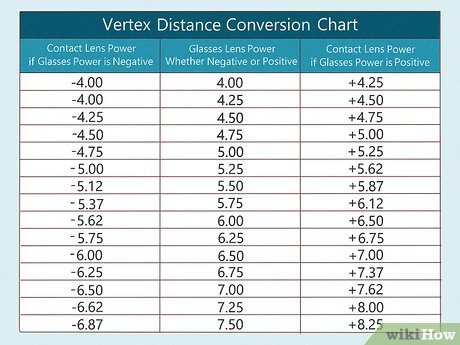For anyone who has ever navigated the world of vision correction, the question of whether glasses and contact lenses require different prescriptions can feel as perplexing as the complexity of optical science itself. As you embark on this exploration, prepare for an eye-opening journey that promises to shift your perspective. Let’s delve into the nuances of prescription powers and the intriguing differences that exist between these two lifelines to clearer vision.
First, it is essential to understand the fundamental purpose of both glasses and contacts. They are designed to rectify refractive errors—common vision issues such as myopia (nearsightedness), hyperopia (farsightedness), astigmatism, and presbyopia. However, despite their shared mission, the method of correction differs significantly, leading to variations in prescription notation.
To begin, let’s dissect the anatomy of a glasses prescription. A standard eyeglasses prescription includes several parameters: sphere (Sph), cylinder (Cyl), axis, pupillary distance (PD), and sometimes add power for multifocal lenses. The sphere value indicates the degree of nearsightedness or farsightedness, while the cylinder and axis values correct astigmatism. The pupillary distance ensures that the lenses align comfortably with the eyes’ optical centers, while the add power pertains to bifocal or progressive lenses to assist with near vision.
In striking contrast, a contact lens prescription, although it may appear similar at first glance, features additional specifications. Primarily, it includes the base curve (BC) and diameter (DIA) of the lenses. These dimensions are crucial as they ensure that the contact lens fits the curvature of your eye properly, providing both comfort and effective vision correction. The variability in curvature is particularly noteworthy; unlike glasses, contact lenses rest directly on the surface of the cornea, necessitating a prescription that accommodates this direct interaction.
The difference in fit explains why contact lens prescriptions may differ from glasses prescriptions, even for the same person. For instance, the sphere value in a contact lens prescription might be adjusted to compensate for the distance of the lens from the eye. Glasses rest approximately 12 mm away from the eyes, while contact lenses are positioned right on the cornea. This proximity can often require a slightly different strength to achieve optimal visual clarity. Thus, when transitioning from glasses to contacts, it’s not simply a matter of switching frames; it’s akin to recalibrating one’s vision entirely.
One might wonder why these distinctions matter. Beyond the sheer logistics of proper physical fit and functionality, the physiological differences between glasses and contacts affect the comfort and quality of vision each option provides. Contacts can offer a wider field of vision as they conform to the eye’s natural curvature, eliminating peripheral distortion typical with glasses. On the other hand, glasses can provide more ambient light and are generally easier to manage and clean.
Exploring further, let’s not overlook the lifestyle implications of choosing between glasses and contacts. For active individuals, contact lenses may seem an obvious choice due to their unobtrusive nature. However, this choice comes with responsibilities—hygiene is paramount to avoid infections and discomfort. Glasses, while sometimes considered inconvenient, can add a touch of personal style and require less maintenance in terms of nightly care routines. The lifestyle choice, therefore, amplifies the decision beyond mere optical correction into personal expression and comfort.
An additional layer to this discourse is the evolution of lens technology. The introduction of specialty contact lenses, such as those designed for astigmatism or presbyopia, has further complicated the landscape. These advancements create a broader spectrum of options for contact wearers, necessitating specific prescriptions that differ widely from traditional spherical lenses. Similarly, advancements in lens coatings and materials for glasses can continue to refine clarity and durability, enhancing the overall experience regardless of the medium.
Although the conversation may initially seem confined to numbers and technical specifications, it unfurls into a tapestry woven with personal experience, comfort, and practicality. Individuals transitioning from one form to another should seek a comprehensive eye exam with a qualified optometrist. Such assessments ensure that the nuances of their unique vision needs are met, leading to an informed choice about which method of correction might serve them best.
Ultimately, the perceived disparity between glasses and contact lenses transcends the mere gaps in prescriptions. It encompasses an intricate dance of physics, biology, and lifestyle, all converging at the focal point of personal vision needs. As you stand at this crossroad, consider your daily habits, activities, and inclinations. Both glasses and contacts have their merits, and understanding how they diverge and overlap opens a window to ensuring that your vision remains as clear as your understanding of the choices at hand.
So, as you mull over your options, remember that prescription power is more than a collection of numbers. It’s a vital aspect that shapes your everyday experience and, ultimately, your worldview. Whether you opt for the clarity of glasses or the convenience of contacts, embracing the right prescription for your eyes can remarkably alter your perspective on life’s intricate details.
